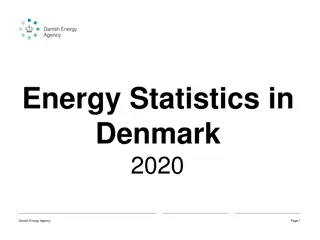
Understanding Image Sharpening Filters and Edge Detection in Image Processing
Enhance your knowledge about sharpening filters and edge detection in image processing. Learn how sharpening draws attention to image details and how edge detection operators work based on pixel neighborhood relationships. Explore Laplacian filter advantages and Sobel operators for effective edge detection.
Download Presentation

Please find below an Image/Link to download the presentation.
The content on the website is provided AS IS for your information and personal use only. It may not be sold, licensed, or shared on other websites without obtaining consent from the author. If you encounter any issues during the download, it is possible that the publisher has removed the file from their server.
You are allowed to download the files provided on this website for personal or commercial use, subject to the condition that they are used lawfully. All files are the property of their respective owners.
The content on the website is provided AS IS for your information and personal use only. It may not be sold, licensed, or shared on other websites without obtaining consent from the author.
E N D
Presentation Transcript
Sharpening filters The objective of sharpening is to draw the attention to the fine details of an image. This is also related to the situation where an image that has been blurred and now needs to be de-blurred. In contrast to the process of image : Smoothing that normally uses pixel averaging techniques, Sharpening can be conducted using spatial differentiation. The image differentiation actually: Enhances edges Discontinuities Depresses the areas of slowly changing gray-level values. Sharpening filter indicates the filter should have positive coefficients near its center and negative coefficients in the outer periphery.
Laplacian Filter These filters will tend to bring out, or enhance details in the image. Example of convolution masks for the Laplacian-type filters are: 0 -1 0 -1 4 -1 0 -1 0 -1 -1 -1 -1 8 -1 -1 -1 -1 1 1 1 1 -8 1 1 1 1 0 1 0 1 -4 1 0 1 0 Rotating by 90 Rotating by 45 The sum of the coefficients in this kernel is zero, this mean that: when the kernel is over an area of constant (background area) or slowly varying gray level, the result of convolution is zero or some very small number. when gray level is varying rapidly within the neighborhood, the result of the convolution can be large number. This number can be positive or negative, because the kernel contains both positive and negative coefficients; we therefore need to choose an output image representation that supports negative number.
The main advantage of Laplacian filter is to increase the degree of sharpening. It enhance details in all directions equally. Image sharpening and histograms : (a) original image ( c ) histogram (b) sharpened image (d) histogram .
Edge Detection Edge detection operators are based on the idea that edge information in an image is found by looking at the relationship a pixel has with its neighborhood. If a pixel s gray level value is similar to those around it, there is probably not an edge at that point. If a pixel has a neighbors with widely varying gray levels, it may represent an edge point. In other words, an edge is defined by a discontinuity in gray-level. Ideally an edge separates two distinct object. Definitions: Edge can be defined loosely as location in an image where there is a sudden variation in the gray level or color of pixels. An edge is a collection of pixel values whose brightness value changes abruptly. Edges represent boarders between regions on an object or in a scene.
Sobel Operators: The Sobel edge detection masks look for edges in both the horizontal and vertical directions and then combine this information into a single metric. The masks are as follows: -1 0 1 -2 0 2 -1 0 1 -1 -2 -1 0 0 0 1 2 1 Row Mask Column Mask These masks are each convolved with the image. At each pixel location we now have two numbers: S1, corresponding to the result form the row mask and S2, from the column mask. We use this numbers to compute two matrices, the edge magnitude and the edge direction, which are defined as follows: ?+ ?? ? ???? ????????? = ?? ???? ????????? = ??? ??? ??
Example: Compute the convolution of the Sobel operators s1 and s2 with the image and show the edge magnitude image: 3 5 2 4 1 8 3 2 1 5 5 8 7 3 6 7 3 6 Answer : 3 2 1 5 4 8 7 3 6 -1 0 1 -2 0 2 -1 0 1 = (3*-1 ) + ( 5*-2) + ( 7*-1) + (2*0) + (4*0) + (3*0) + ( 1*1) + (8*2) + ( 6*1) = -20+23= 3 Row Mask -1 -2 -1 0 0 0 1 2 1 3 2 1 5 4 8 7 3 6 = (3*-1 ) + ( 5*0) + ( 7*1) + (2*-2) + (4*0) + (3*2) + ( 1*-1) + (8*0) + ( 6*1) = 11 Column Mask = ??+ ??? = ??? = 5 = ? + ??? ?+ ?? ? ???? ????????? = ?? = ??? ??? = ??? ?(?.?) ???? ????????? = ??? ??? ? ??
Combining image enhancement methods In real applications, it is hard to know what kind of noise has been added to an image. Therefore, it is difficult to find a unique filter that can appropriately enhance this noisy image. However, it is possible if several de-blurring methods can be combined in a framework in order to pursue a maximum denoising outcome. We explain one of the combinatorial techniques using an X-ray example. Figure (a) illustrates a male chest s X- ray image. The purpose of the process is to highlight the middle cross section of the image using the combination of sharpening and edge detection. Figure (b) shows the result of applying the median filter, (c) is the outcome of using Sobel edge detection, and finally (d) demonstrates the combination of the Laplacian and Sobel process. Figure (d) shows the edge details in the graph, which highlights the structure of the central cross section of the image.
Home Work 1. Compute the convolution of the Laplacian kernels L_4 and L_8 with the image: 2. Compute the convolution of the Sobel operators s1 and s2 with the image and show the edge magnitude image:






















